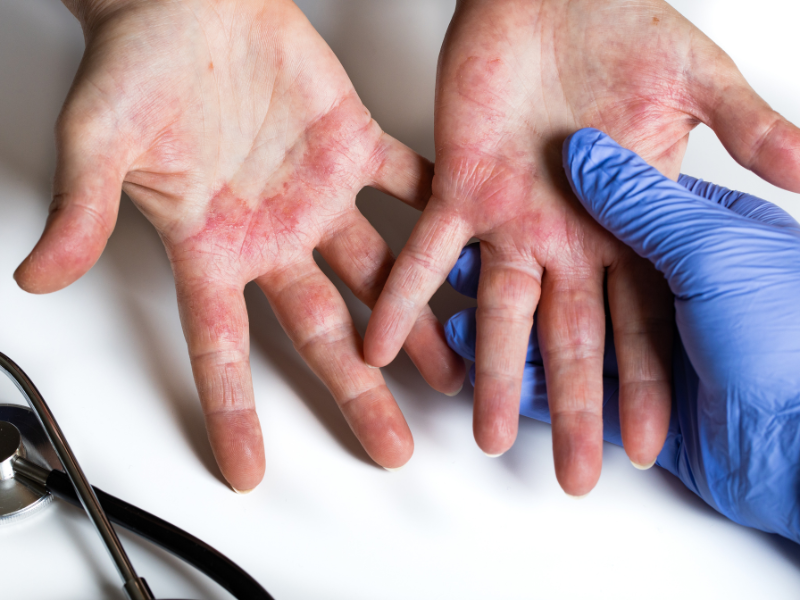Contact Dermatitis

Contact dermatitis is a common skin condition that happens when you come into contact with an allergen or something that irritates your skin. The rash might become swollen, painful, and itchy.
Causes of Contact Dermatitis
Contact dermatitis occurs when the skin comes into direct contact with irritants or allergens. Common triggers include:
· Irritants– these are substances that can irritate the skin like chemicals, detergents, alcohol, bleach, fertilizer, pesticides, etc.
· Allergens– can trigger an allergic reaction. Common allergens include cosmetics, medications, latex, metals, and certain plants.
Symptoms of Contact Dermatitis
Symptoms may include a rash on the skin that:
· Appears red to purple, or darker than your natural skin color.
· Bumps, blisters
· Swollen
· Dry, flaky skin
· Itchy
· Painful with a burning sensation
How long does contact dermatitis last?
The duration of symptoms varies according to the severity of the reaction and the individual’s susceptibility to the irritant or allergen. The rash may linger for a few days or weeks to resolve with treatment.
Mild cases may resolve themselves within a few days of avoiding the source of your symptoms, with no further treatment required.
Types of Contact Dermatitis
There are two main types of contact dermatitis:
· Allergic contact dermatitis: It occurs when your body reacts to an allergen like nickel in jewelry or some cosmetics, by producing an itchy rash. Symptoms may take many days to manifest following exposure.
· Irritant contact dermatitis: This nonallergic skin reaction occurs when an allergen causes damage to your skin’s outer protective layer. It occurs in response to direct contact with irritants like detergents or acids. It is more prevalent than allergic contact dermatitis.
Can Contact Dermatitis Spread?
Contact dermatitis is not contagious and cannot be spread from person to person. However, if the irritant or allergen is not removed, the rash can spread to other areas of the body. It is important to identify and avoid the cause of the reaction to prevent further spread.
Contact Dermatitis Treatment
Treatment options include:
- Avoiding the irritant or allergen.
- Applying creams and ointments to relieve itching and inflammation.
- Taking oral antihistamines to relieve itching.
- Use wet dressings over the rash for 15 to 30 minutes to soothe the skin several times a day.
- Taking prescription medications to reduce inflammation.
Contact Dermatitis Prevention
Preventing contact dermatitis involves avoiding the irritant or allergen that causes the reaction. This can be done by:
- Wearing protective clothing when handling irritants or allergens
- Using mild soaps, cleansers, and detergents
- Choosing fragrance-free moisturizers
- Avoiding harsh chemicals and solvents
- Wearing gloves when handling certain materials, such as latex.
- Immediately wash hands and skin following contact with allergens or irritants.
- Avoiding contact with plants that can cause allergic reactions, such as poison ivy.



